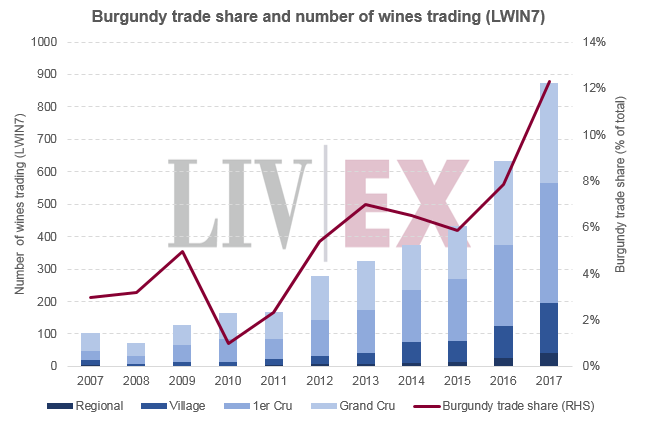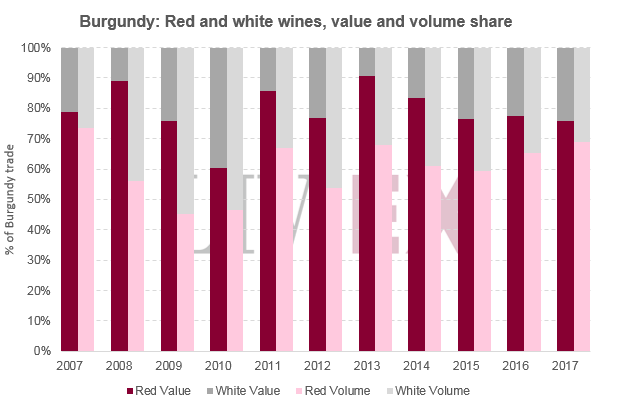The below post is an extract from our recent report on the Burgundy market, “The market’s favourite tipple”, which you can download in full on Liv-ex here. The FT ran a cover story on the report, which you can find out more about it here.
A broadening market

The pivotal year for Burgundy’s development in the secondary market was 2011. With Bordeaux prices reaching a peak, focus turned to the region. As Burgundy’s market share increased, the breadth and depth of Burgundy trading through the secondary market has evolved considerably. The number of distinct wines (LWIN7) trading has increased at every level of the classification pyramid, as the chart above shows.
In 2017, the number of regional wines that traded was roughly equal to the number of Grand Crus that traded ten years earlier in 2007. This is a good illustration of the sheer breadth of Burgundy wines that are now sought by the international trade. It reflects the fact that it is not only rare, high value wines that are traded, but also lower value wines in higher volumes such as those from village appellations.
Reds dominate

Although trade share has oscillated slightly since 2007, reds have been more active than white wines in terms of both value and volume traded every year. For the last three years reds have accounted for 75% of Burgundy’s trade by value. Even with the market broadening, trade is still mainly based around high value reds from the Cote de Nuits.
A noticeable recent trend is that volume of white burgundy trading has fallen without a corresponding fall in value, suggesting more high value white wines are trading than before.
The full report contains 23 pages of analysis on the Burgundy market. You can download it here.
[mc4wp_form id=”18204″]




